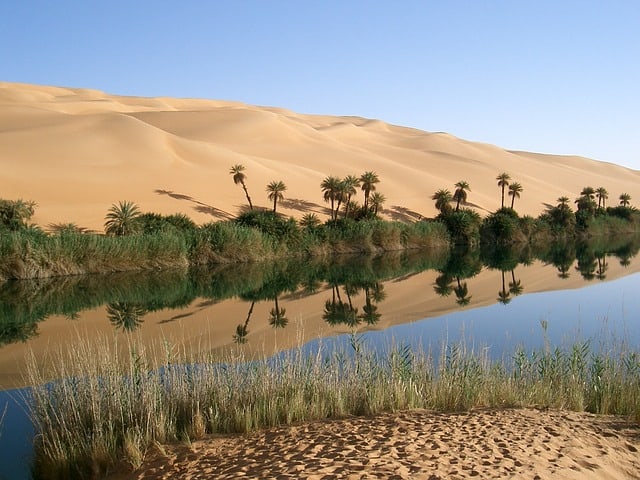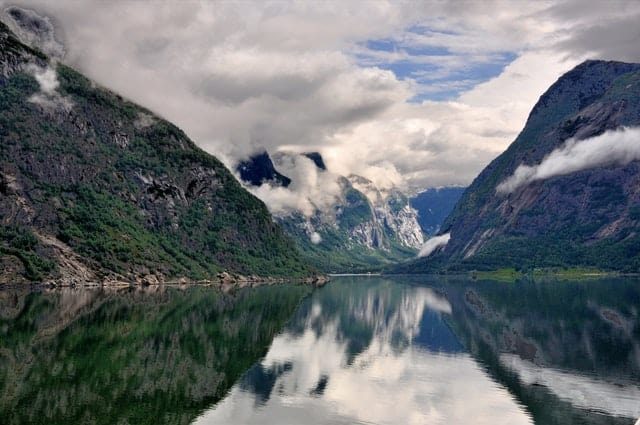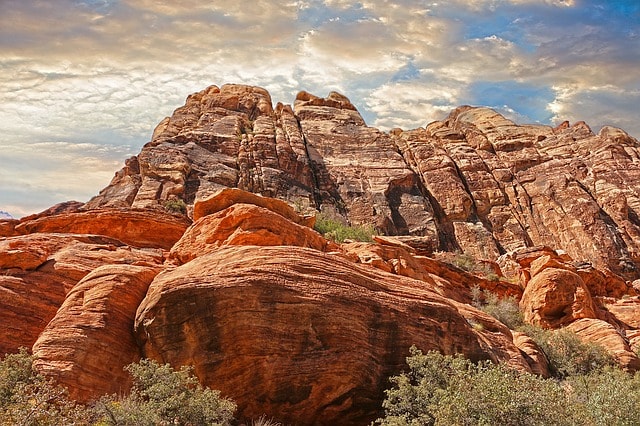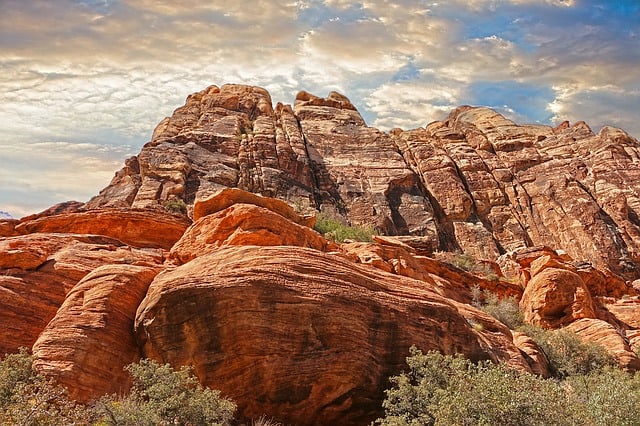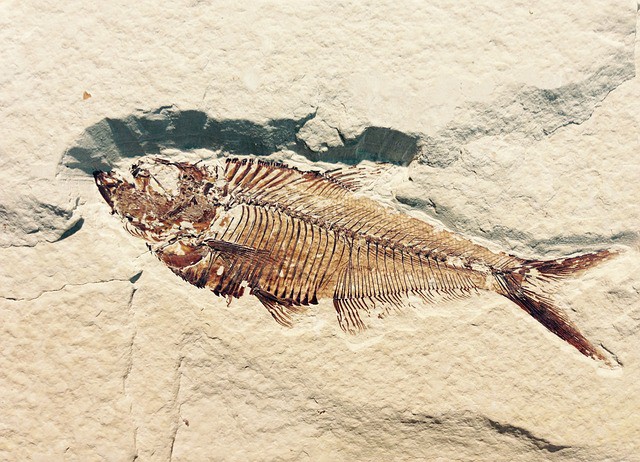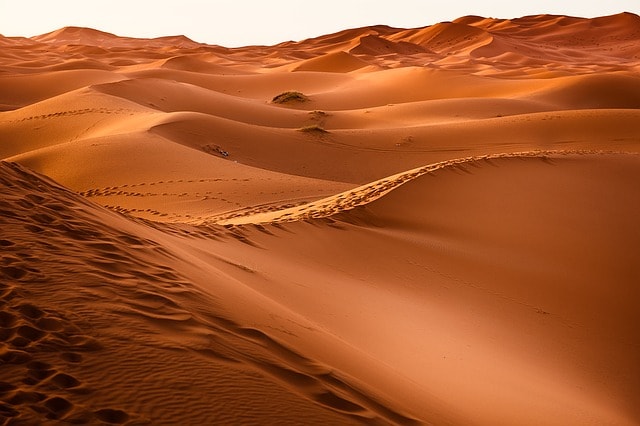What is Sand? Composition, Colors and Various Types of Sand
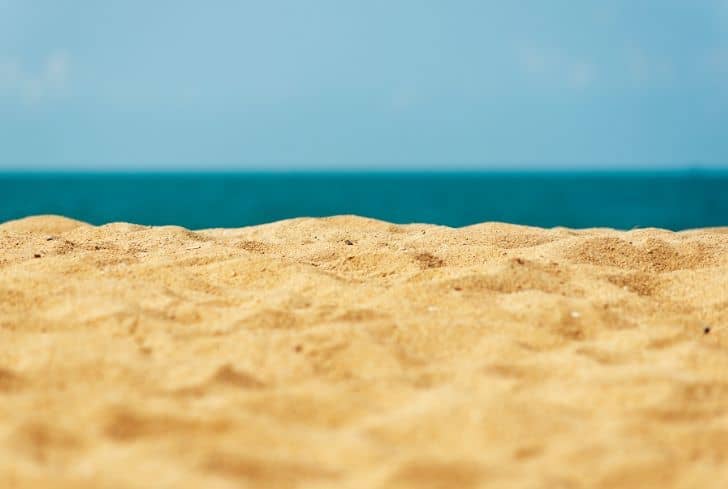
Sand is more than something that blankets beaches and deserts. It is ubiquitous, much more diverse and, an authentic relic. As Rachel Carson, the American marine biologist once quoted, “In every curving beach, in every grain of sand, there is a story of the Earth.”
So, what is sand? Where does sand come from? What’s in a handful of tiny grains? Let’s check.
Sand is the end product of many things, including inland and marine rock particles, organic by-products, as well as bio-organisms. These particles eroded and weathered overtime before they got almost indivisible.
Geologists define sand as fine rock particles with a diameter ranging from 0.063 to 2 millimeters. An individual such particle is called a sand grain. Particles from 0.0623 to 0.004 millimeters are called silt, and there are larger particles range from 2 to 64 millimeters.
How is Sand Formed?
Mountains don’t stay put forever. Chunks or a major portion of them break off by natural forces, gravity, tectonics, wind, and water, for example. And, that’s when the journey of sand starts. Weathering is the name Geologists given to this process.
There are three types of weathering; physical, chemical, and biological.
1. Physical weathering happens through freeze-thaw cycles, wetting and drying, root-wedging, and abrasion. It doesn’t cause any changes in the mineral composition of the parent rocks but crushes them into finer and finer particles. It is prevalent in dryer regions.
2. Majorly seen in a hot and humid area, chemical weathering is by means of carbonation, dissolution, hydration, hydrolysis, and oxidation-reduction reactions. Here, the composition of rocks changes due to the production of new byproducts.
3. Plant roots and soil organisms facilitate biological weathering. For example, carbonic acid formed during plant respiration chemically attacks the rocks and turn them into fine particles.
Water facilitates the movement of rock sediments downstream. On their way, lighter sediments get broken down and carried to oceans. Whereas the heavier ones settle along streams, cliff sides, and river banks with some assistance from the gravitational force.
Like gravity, wind also takes part in transporting rocky sediments and fine particles to various locations. Plate tectonics also joins wind and water to uplift rocks and wear them down.
Over long periods of time, the sediments become sand.
Composition of Sand
Sand comes from pre-existing rocks. Therefore, sand will contain minerals that were already present before weathering commenced. An important thing to note here is that the minerals resistant to weathering will dominate sand’ composition.
Quartz, also known as silicon dioxide, is one such mineral. As a general rule, the farther from its parent rock sand is, the closer it is to pure quartz.
In most cases, feldspar grains accompany quartz. Feldspar makes 65% of the terrestrial rocks, is moderately stable and its percentage varies with different sand types. Other minerals seen in the sand are mica, amphibole, ilmenite magnetite, and more. Sand also contains heavy minerals such as tourmaline and zircon in traces.
Colors of Sand
Most sand appears to be pale to golden or caramel but in select places, sands can be black, brown, orange, pink, red, or even green and purple.
Sand’s color comes from its mineralogy or the physical structure of the crystals that dominate the sand. The color of sand, in fact, reflects the history of the surrounding landscape.
- White Sand: Quartz grains impart sand its striking white color as it doesn’t have contaminants. Hyams Beach in Australia (the whitest sand beach in the world) and the Tularosa Basin in the northern Chihuahuan Desert are some popular destinations with glistening white sands.
- Red sand: Reddish color indicates a significant quantity of weathered iron nearby. When iron reacts with oxygen, it forms iron oxide, commonly known as rust. Depending on the concentration of iron oxide minerals, hematite and goethite, sand takes different shades of red.
- Orange sand: Iron-rich minerals can also impart orange hue to sand. A combination of orange limestone, volcanic deposits, and shells of marine organisms can give sands an orange color.
- Pink sand: The pink shade usually indicates the area is populated with calcium carbonate-containing corals. In some instances, the pink color arises from foraminifera, a marine organism with red shells. Example: Pink sand beach on Harbour Island, Bahama.
- Purple sand: Manganese garnet grains are responsible for the purple color of sand. Garnet sand is seen in Plum Island beach, Woodruff Pond in the Adirondack Mountains, and Woodruff pond.
- Black sand: Basalt, a common igneous rock formed from cooled lava is responsible for the black color of sand.
- Green sand: Sand takes green color when the green mineral, Olive, is abundant in a particular landscape. Olivine is a common mineral seen in igneous rocks like basalt.
Types of Sand
There are many criteria to classify the sand. Here are some common ones.
Based on Origin
- Abiogenic — Sands formed from eroded pieces of rocks
- Biogenic — Sands formed from the skeletal remains of plants and animals.
1. Abiogenic Sands
These are mineral sands formed from rocks through weathering and erosion. Example: quartz sands, volcanic sands, mineral sands, and more.
Common components of abiogenic sand are:
- Dark lava flows are basalt. As basalt weather and erode, it forms dull black, gray, or brownish-red grains of gravel and sand.
- Feldspar is a rock-forming mineral occurring as colorless or pink crystals.
- Grains are usually pale to pink, with elegant crystal patterns that are visible to the naked eye.
- Magnetic mineral grains. Dense grains of iron or other metals.
- Noted for its freshness and beautiful inclusions, this see-through crystal has olive-green to brown shades.
- Very similar to the broken glass pieces, this white grain is formed from granite and sandstone erosion. It is the most abundant mineral found at Earth’s surface.
- Volcanic glass. Dark, shiny, irregular but sharp-edged product of rapidly cooling magma.
Some Examples of Abiogenic Sand Types:
- Continental sand: This pale yellow to light brown sand is predominantly seen on the continental beaches or along passive continental margins. With quartz being the major constituent, it also has other minerals like feldspar, mica, and biogenic grains.
- Volcanic sand: Volcanically active or affected areas have their own sand. Olivine, pyroxene, and magnetite are the characteristic minerals of such dark-colored sands – hence the name black sand. Volcanic sand also contains hornblende and lots of iron.
- Lithic Sand: Rather than smaller grains, lithic sand has rock fragments such as amphibolite, quartzite, schist, phyllite, granite, and basalt in greater abundance. It is an immature sand type – meaning, the source rocks are close by and weathering forces have a lesser effect on them.
2. Biogenic Sands
Also called as organic sands or biological sands, they are formed from skeletal remains of once-living organisms. They are also sometimes referred to as calcium sands because of the presence of calcium in the animal skeleton. Biogenic sands are described by their most abundant component – for example, coral sand.
Biogenic sand components:
- Molluscan shells. Entire or broken pieces of clam, oyster, mussel or gastropod shells
- Calcareous algae. They can precipitate calcium carbonate within, between, and upon their tissues to form a stronger skeleton.
- Coral. Calcareous fragments of coral rubble.
- A single-celled protist that makes shells to protect themselves.
- Sea urchin skeleton. The heavy shell and spines with calcite crystals.
Based on Their Source
We get sand either naturally or artificially. Based on this, sand if categorized as,
- Pit sand: Collected from the ground by digging pits, it is natural sand. Ideal pit depth to get porous pit sand is 1 to 2 m from ground level. It is widely used in civil construction for its excellent binding quality
- River Sand: This type of natural sand is found at river beds and banks. It is normally free of impurities and has grains smaller than pit stand. The main use is in plastering and civil engineering works.
- Sea sand: Seashores are the sources. Due to the rubbing action of water, this type is finer, rounded, and more polished
- Artificial Sand: An effective alternative to river sand, it is produced by breaking down basalt rock or granite.
Based on Sieve Size
Based on sieve size sand can be divided into the following four types.
- Fine Sand: This type passes through 1.5875 mm sieve
- Coarse Sand: Sand passing through 3.175 mm sieve is called coarse sand
- Gravelly Sand: This one can pass through 7.62 mm sieve
Based on Their Purpose
- Brick Sand: As the name suggests, it is used for brickwork. With no traces of clay, it is fine sand. The finest modulus: no more than 1.2 to 1.5
- Plaster sand: A washed fine aggregate sand which is used in plaster mixes. The finest modulus: not exceeding 1.5
- Concrete Sand: A type of course sand with a bigger grain size. The finest modulus: 2.5 to 3.5.
References:
https://www.britannica.com/science/sand
http://www.sandatlas.org/sand-types/
https://www.nature.com/scitable/blog/saltwater-science/what_is_sand_made_of/

